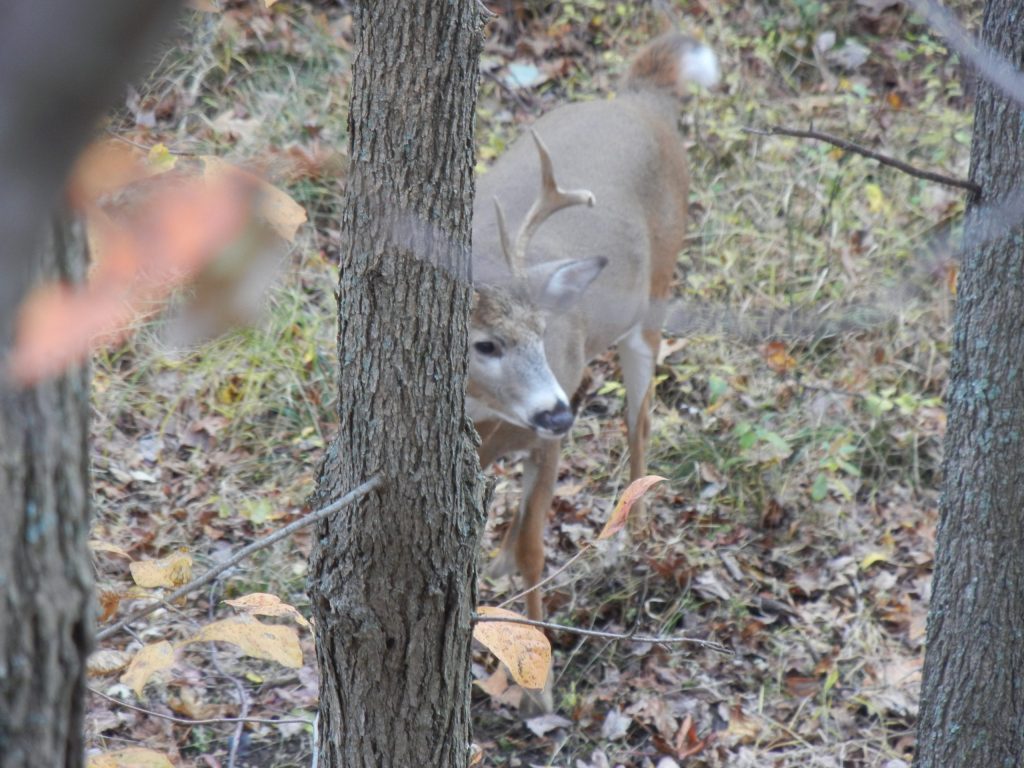Since the inception of this blog, I have thought about the idea of patterning a deer’s movements using either game cameras or simply spending enough time in the woods. How would one do it?
Personally, I don’t have enough time to sit in a tree stand THAT long, and I don’t own enough game cameras. However, professionally I have access to GPS collared deer. Evaluating movements with satellites is certainly more accurate. (Note: I don’t deer hunt on the study areas!)
Over the past several years, I have made many movies of bucks during the rut. The only pattern I can identify is that there is no pattern – there too many exceptions to any rule I can possibility think of.
This blog post is about such an exception. In a previous post we showed you a buck who had a bachelor pad. He spent his summers in one place and moved a couple miles away to spend the rut on his bachelor pad. Not many deer do this sort of thing.
Or so I thought.
I am going to show you the movements and home range of a buck during September, October, and November of 2017. This deer was captured on the Susquehannock State Forest and was at least 3.5 years old.
Before I start, I need to get a little technical. The first definition of an animal’s home range was published in the Journal of Mammalogy in 1947. C. O. Mohr wrote that a home range was the “area traversed by an animal during it’s normal movements.” That’s fine but defining “normal” in a way that you can calculate a home range has been a challenge for quantitative wildlife ecologists for decades.
With modern GPS collars we can now get tens or hundreds of locations a day which has led to home range estimators that are getting pretty close to modeling the “area traversed by an animal during is normal movements.” I will be using 95% home ranges based on a Brownian Bridge Movement Model – suffice to say 95% of the time the animals’ movements occur within the home range boundary. This model works quite well.
Now that we are done with the technical stuff…
Let’s start in September 2017. His home range was a whopping 474 acres (0.74 sq. miles). This is actually slightly below average for a deer (male or female) in the Big Woods during this time of year. Here is a video of his movements for the month.
Not very interesting.
But check out what happens on the 17th of October!
Now October is supposed to have the Lull. Not so much for this deer…
This deer’s home range is now 8.4 sq miles! So much for an October Lull!
The worst part is that if you got this deer on your game camera in September, you can forget about seeing him again for the rest of the hunting season. How sad is that?
Patterning a buck? I’m pretty sure it’s an exercise in futility.
In comparison to October, this buck actually “settled down” in November when his home range was 6.34 square miles. However, notice that he clearly starts making movements crisscrossing his home range in search for females.
Maybe some deer can be “patterned” during the rut. But it certainly isn’t going to be this one! In fact, I haven’t found one yet!
-Duane Diefenbach
If you would like to receive email alerts of new blog posts, subscribe here.
And Follow us on Twitter @WTDresearch
